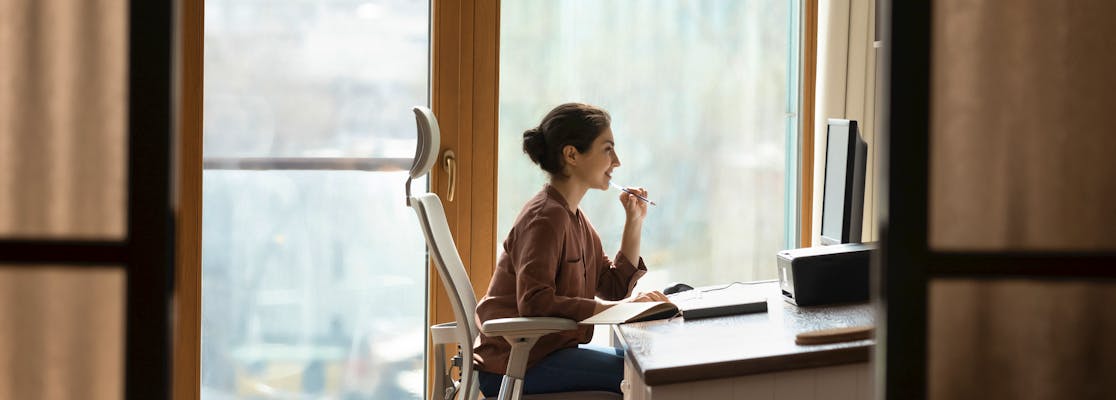15 Must-Have Desk Exercise Equipment for a Healthier Workday
- 15 Examples of Premier Desk Exercise Equipment to Elevate Your Health
empty
empty
empty
empty
empty
empty
empty
empty
empty
empty
empty
empty
empty
empty
empty
- The Importance of Movement in Sedentary Careers
empty
empty
- Best Practices and Etiquette for Using Desk Exercise Equipment in the Workplace
- Frequently Asked Questions
- Final Thoughts
In an era where desk jobs dominate the professional landscape, maintaining an active lifestyle has become more challenging yet increasingly essential.
The sedentary nature of modern work can have profound effects on our health, from increased risks of chronic diseases to diminished mental wellbeing.
Recognizing the importance of movement and exercise during the workday is the first step towards counteracting these risks.
Fortunately, integrating physical activity into your routine doesn’t have to mean disrupting your workflow or investing in a gym membership you might never use.
With the right equipment, staying active and healthy at your desk is not only achievable but can also be enjoyable and highly effective.
This article introduces 15 must-have pieces of desk workout equipment designed to fit seamlessly into your work environment.
15 Examples of Premier Desk Exercise Equipment to Elevate Your Health
In the quest for a healthier workday, selecting the right exercise equipment is paramount.
Incorporating any combination of these 15 exercise equipment pieces into your daily office routine can lead to significant health benefits, from increased physical activity and strength to improved posture and flexibility.
Each item offers a unique way to combat the sedentary lifestyle that comes with desk jobs, making them invaluable tools for anyone looking to enhance their health and productivity at work.
1. Under-Desk Bikes and Ellipticals
These compact devices allow you to pedal quietly while you work, promoting circulation and burning calories without leaving your desk.
Perfect for multitaskers, under-desk bikes and ellipticals are a must-have for those looking to incorporate more physical activity into their routines with minimal disruption to their work.
2. Balance Boards
Standing on a balance board can engage your core and leg muscles, improving posture and reducing the discomfort associated with long periods of sitting.
They’re ideal for use with standing desks, offering a dynamic way to stay active even while you work on your tasks.
3. Desk Treadmills
Desk treadmills enable walking at a slow pace while you work, combating the negative effects of sitting and boosting your mood and productivity.
They’re a significant investment in your health, offering a straightforward way to meet daily step goals without compromising job performance.
4. Hand Exercisers
Hand exercisers strengthen the muscles in your hands and forearms, improving grip strength and reducing the risk of repetitive strain injuries.
They’re small, affordable, and can be used during breaks or conference calls, making them an easy addition to your office setup.
5. Resistance Bands
These versatile tools can be used for a variety of strength training exercises targeting different muscle groups.
Resistance bands are particularly useful for quick workouts, as they can be easily stored in a desk drawer and used to perform stretches or strengthening exercises right at your desk.

6. Standing Desk Converters
Transforming your traditional desk into a standing desk, these converters encourage you to alternate between sitting and standing throughout the day.
This variation in posture helps reduce back pain, improves energy levels, and increases calorie expenditure.
7. Posture Correctors
Wearing a posture corrector can help remind you to sit or stand with proper alignment, reducing the strain on your back and shoulders.
This simple tool is essential for anyone looking to improve their posture and comfort during long work hours.
8. Footrests
An ergonomic footrest can alleviate lower back pain and improve circulation by supporting your legs and encouraging active sitting.
This small addition to your workspace can make a significant difference in your comfort and health.
9. Ergonomic Office Chairs
Investing in an ergonomic chair supports your back, promotes good posture, and enhances comfort during long periods of sitting.
These chairs are adjustable and designed to fit your body’s needs, making them a crucial component of a healthy workspace.
10. Stretching Aids
Items like stretching straps or bands encourage you to take short breaks to stretch, reducing muscle tension and increasing flexibility.
These aids can help counteract the stiffness associated with sitting and are easy to use right at your desk.
11. Mini Steppers
Mini steppers offer a low-impact cardiovascular workout, allowing you to simulate the act of stair climbing.
They’re compact and silent, making them perfect for fitting in a quick workout without leaving your desk area.
12. Adjustable Dumbbells
For those looking to incorporate strength training into their day, adjustable dumbbells are space-efficient and versatile.
They allow for a range of exercises that can be done right in the office, from bicep curls to shoulder presses, enhancing your strength and posture.
13. Foam Rollers
Using a foam roller for short breaks can help relieve muscle tightness and improve mobility.
Especially beneficial for those who experience tension from sitting, foam rollers can be used on the back, legs, and arms to increase blood flow and reduce pain.
14. Yoga Mats
A portable yoga mat enables you to perform stretching or yoga poses during breaks, offering a mental and physical reset.
This simple tool can significantly impact your wellbeing, reducing stress and increasing body awareness.
15. Active Sitting Chairs
These chairs encourage movement and balance, engaging your core muscles and promoting dynamic sitting.
By allowing for slight bouncing or rocking, active sitting chairs make it easier to stay active and reduce the health risks associated with prolonged sitting.

The Importance of Movement in Sedentary Careers
In today's digital age, a significant portion of the workforce finds themselves tethered to their desks for the majority of the day.
This sedentary lifestyle, predominantly characterized by prolonged periods of sitting, poses serious health risks that are increasingly recognized by health professionals worldwide.
Understanding the imperative for movement and the dangers of inactivity is the first step toward fostering a healthier work environment and lifestyle.
Health Implications of Prolonged Sitting
The human body is designed for movement, and a sedentary lifestyle goes against our natural physiology, leading to a host of health issues.
Research has linked prolonged sitting with a higher risk of several chronic conditions, including:
- Obesity
- Type 2 diabetes
- Cardiovascular disease
- Certain types of cancer
- Back pain
- Weakening of the musculoskeletal system
- Poor mental health, such as anxiety and depression
Sedentary behavior doesn't just affect physical and mental health in the long term; it can also have immediate repercussions on daily productivity and energy levels.
Extended sitting can lead to a decrease in blood circulation, resulting in fatigue and reduced concentration. This diminished alertness not only impacts work performance but also decreases overall job satisfaction, contributing to a vicious cycle of inactivity and its negative outcomes.
Benefits of Integrating Desk Workout Equipment into Your Workday
The good news is that the negative effects of a sedentary lifestyle can be mitigated, and even reversed, by integrating regular movement and exercise into the workday.
Small, consistent changes to incorporate physical activity during office hours can have profound benefits on overall health and work performance.
Embracing the imperative for movement in sedentary careers is not just a personal health strategy; it's a professional imperative. As we move forward, integrating exercise into the workday becomes a crucial element for achieving both personal wellbeing and professional success.
Physical Health Benefits:
- Improved circulation: Regular movement helps to increase blood flow throughout the body, delivering oxygen and nutrients more efficiently to muscles and organs.
- Reduced risk of chronic disease: Engaging in physical activity can lower blood pressure, improve glucose metabolism, and decrease body fat, all of which reduce the risk of chronic diseases associated with sedentary behavior.
- Enhanced musculoskeletal health: Regular exercise strengthens the muscles, bones, and joints, alleviating back pain and improving posture and flexibility.
Mental and Cognitive Benefits:
- Increased mental clarity and productivity: Physical activity boosts brain function, enhancing cognitive abilities such as memory, concentration, and problem-solving. This leads to improved productivity and creativity in professional tasks.
- Stress reduction: Exercise is a powerful stress reliever, releasing endorphins that improve mood and reduce feelings of anxiety and depression. This not only enhances wellbeing but also contributes to a more positive work environment.
Best Practices and Etiquette for Using Desk Exercise Equipment in the Workplace
Using a desk exercise machine is a great way to stay active during the workday, but it's important to do so considerately, especially in shared workspaces.
By keeping these considerations and etiquette tips in mind, you can enjoy the benefits of staying active at work while respecting the comfort and productivity of those around you.
Here are some key things to consider and etiquette tips for incorporating exercise equipment into your office routine:
Step 1. Noise Level
Choose equipment that operates quietly to avoid disturbing your colleagues. Noise can be distracting and disrupt the workflow of those around you.
Test the equipment before bringing it into a shared space to ensure it’s suitably quiet.
Step 2. Space Utilization
Ensure your exercise equipment doesn’t intrude on others’ space. Shared work environments often have limited space, and your health initiatives shouldn’t encroach on the comfort of others.
Keep your equipment under or beside your desk when not in use, maintaining clear walkways and common areas.
Step 3. Safety
Using exercise equipment at your desk should not pose a safety risk to you or those around you. Be mindful of cords, moving parts, or anything that could potentially cause harm.
Regularly inspect your equipment for any wear or damage that could lead to accidents, and ensure it’s securely positioned during use.
Step 4. Hygiene
Exercise equipment can harbor bacteria and germs, especially when used frequently.
Clean and disinfect your equipment regularly, especially if you’re using shared items like weights or resistance bands. This practice helps maintain a hygienic work environment for everyone.
Step 5. Timing
Be mindful of when you use your equipment. During business meetings or collaborative work sessions might not be the best time to start pedaling or stretching.
Plan your exercise breaks during less busy times of the day or when they are least likely to distract or inconvenience others.
Step 6. Visual Distraction
Some types of exercises or equipment might be visually distracting to others, potentially impacting their concentration or work focus.
Choose exercises that are low-key and unlikely to catch the eye of your coworkers continuously. If possible, position your equipment so that it's out of direct sight for others.
Step 7. Professionalism
Maintaining a professional environment is crucial, even while prioritizing your health and wellness.
Ensure that your use of desk workout equipment is in line with your company’s culture and policies.
It’s always a good idea to discuss with management or HR before bringing in significant pieces of equipment.
Step 8. Inclusivity
Promote a culture of health and wellness in your workplace by encouraging others to join you in staying active.
Share equipment if hygienically possible and safe, and be open to discussing your health strategies with interested colleagues.
Creating an inclusive atmosphere can lead to a healthier, more engaged workforce.
Ergonomic office chairs, posture correctors, and balance boards are excellent for improving posture. They encourage proper spinal alignment and strengthen core muscles, reducing the risk of back pain associated with prolonged sitting.
Yes, under-desk bikes can contribute to weight loss by increasing your daily calorie burn. Incorporating these devices into your routine, along with a balanced diet and regular exercise, can help you achieve a caloric deficit necessary for weight loss.
Regular use of a desk treadmill, such as walking for 30 to 60 minutes daily, can significantly improve cardiovascular health, reduce the risk of chronic diseases, and enhance mental clarity. Consistency is key to seeing health benefits.
Balance cushions are highly effective for core strengthening. They create an unstable surface, forcing your core muscles to work harder to maintain balance, which can be done even while seated, making them perfect for office environments.
Resistance bands can be used for quick stretching or strength exercises during breaks. Target major muscle groups with exercises like band pulls or leg presses to improve muscle tone and relieve tension from sitting.
Final Thoughts
Integrating desk fitness equipment into your desk job routine is a practical and effective way to combat the health risks associated with sedentary lifestyles.
From under-desk bikes that keep your legs moving to ergonomic chairs that support your posture, each piece of equipment offers a unique way to enhance your physical wellbeing without compromising your work.
Embracing these tools not only boosts your health and productivity but also sets a foundation for a more active, fulfilling work life.
Remember, the key to reaping the benefits of desk exercise machines lies in consistency and making movement a natural part of your daily routine. So, choose the equipment that best fits your needs and start your journey towards a healthier workday today.





